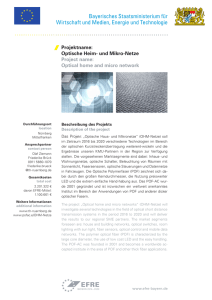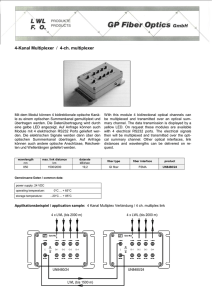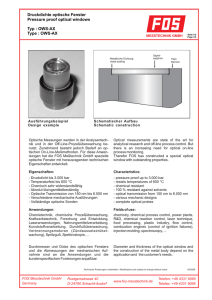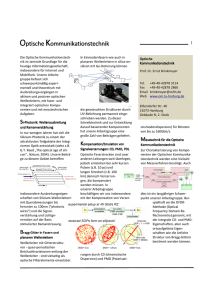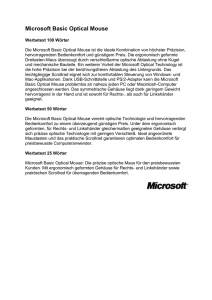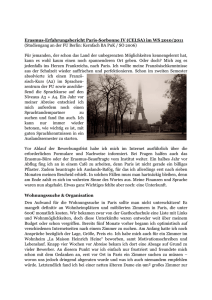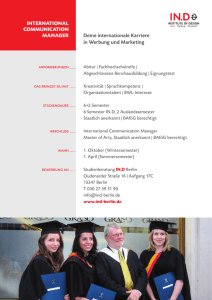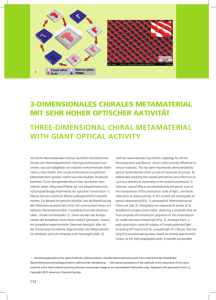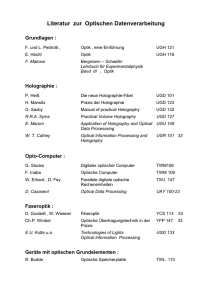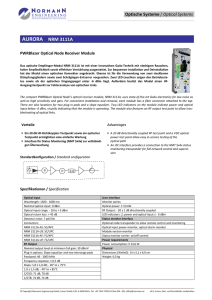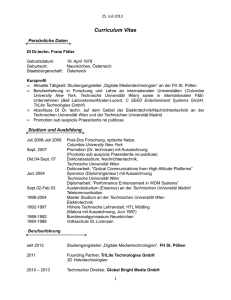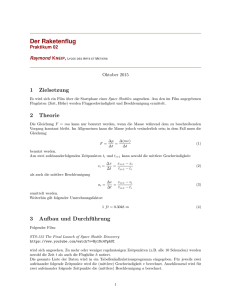Link budget analysis for RF and Optical Transmission systems
Werbung
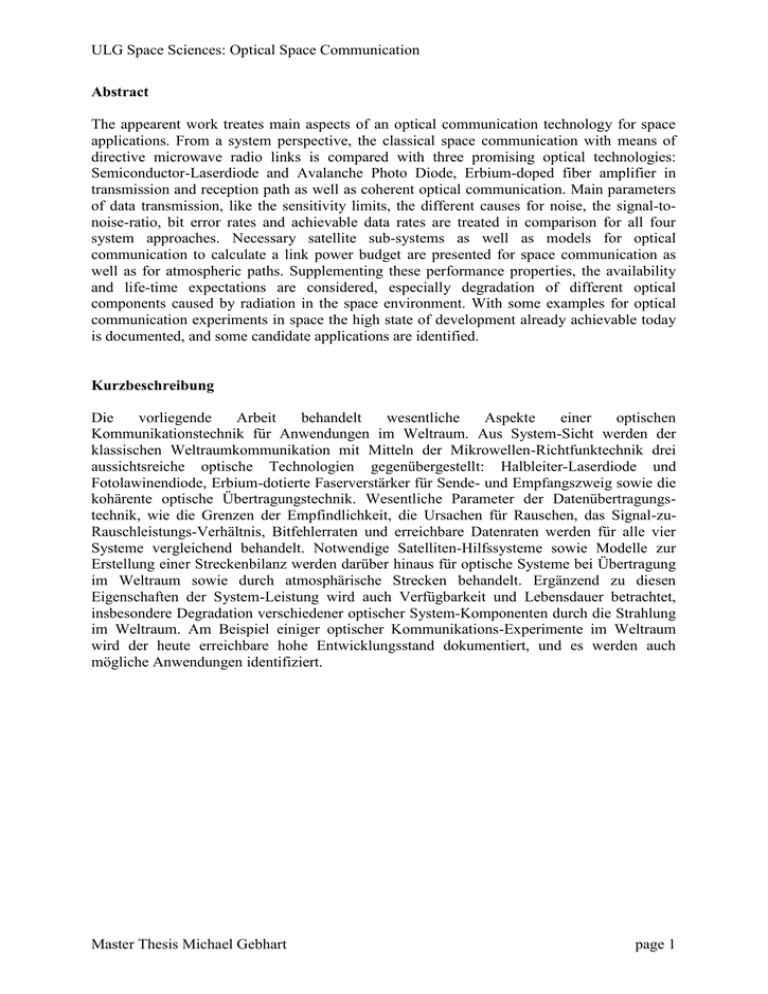
ULG Space Sciences: Optical Space Communication Abstract The appearent work treates main aspects of an optical communication technology for space applications. From a system perspective, the classical space communication with means of directive microwave radio links is compared with three promising optical technologies: Semiconductor-Laserdiode and Avalanche Photo Diode, Erbium-doped fiber amplifier in transmission and reception path as well as coherent optical communication. Main parameters of data transmission, like the sensitivity limits, the different causes for noise, the signal-tonoise-ratio, bit error rates and achievable data rates are treated in comparison for all four system approaches. Necessary satellite sub-systems as well as models for optical communication to calculate a link power budget are presented for space communication as well as for atmospheric paths. Supplementing these performance properties, the availability and life-time expectations are considered, especially degradation of different optical components caused by radiation in the space environment. With some examples for optical communication experiments in space the high state of development already achievable today is documented, and some candidate applications are identified. Kurzbeschreibung Die vorliegende Arbeit behandelt wesentliche Aspekte einer optischen Kommunikationstechnik für Anwendungen im Weltraum. Aus System-Sicht werden der klassischen Weltraumkommunikation mit Mitteln der Mikrowellen-Richtfunktechnik drei aussichtsreiche optische Technologien gegenübergestellt: Halbleiter-Laserdiode und Fotolawinendiode, Erbium-dotierte Faserverstärker für Sende- und Empfangszweig sowie die kohärente optische Übertragungstechnik. Wesentliche Parameter der Datenübertragungstechnik, wie die Grenzen der Empfindlichkeit, die Ursachen für Rauschen, das Signal-zuRauschleistungs-Verhältnis, Bitfehlerraten und erreichbare Datenraten werden für alle vier Systeme vergleichend behandelt. Notwendige Satelliten-Hilfssysteme sowie Modelle zur Erstellung einer Streckenbilanz werden darüber hinaus für optische Systeme bei Übertragung im Weltraum sowie durch atmosphärische Strecken behandelt. Ergänzend zu diesen Eigenschaften der System-Leistung wird auch Verfügbarkeit und Lebensdauer betrachtet, insbesondere Degradation verschiedener optischer System-Komponenten durch die Strahlung im Weltraum. Am Beispiel einiger optischer Kommunikations-Experimente im Weltraum wird der heute erreichbare hohe Entwicklungsstand dokumentiert, und es werden auch mögliche Anwendungen identifiziert. Master Thesis Michael Gebhart page 1
